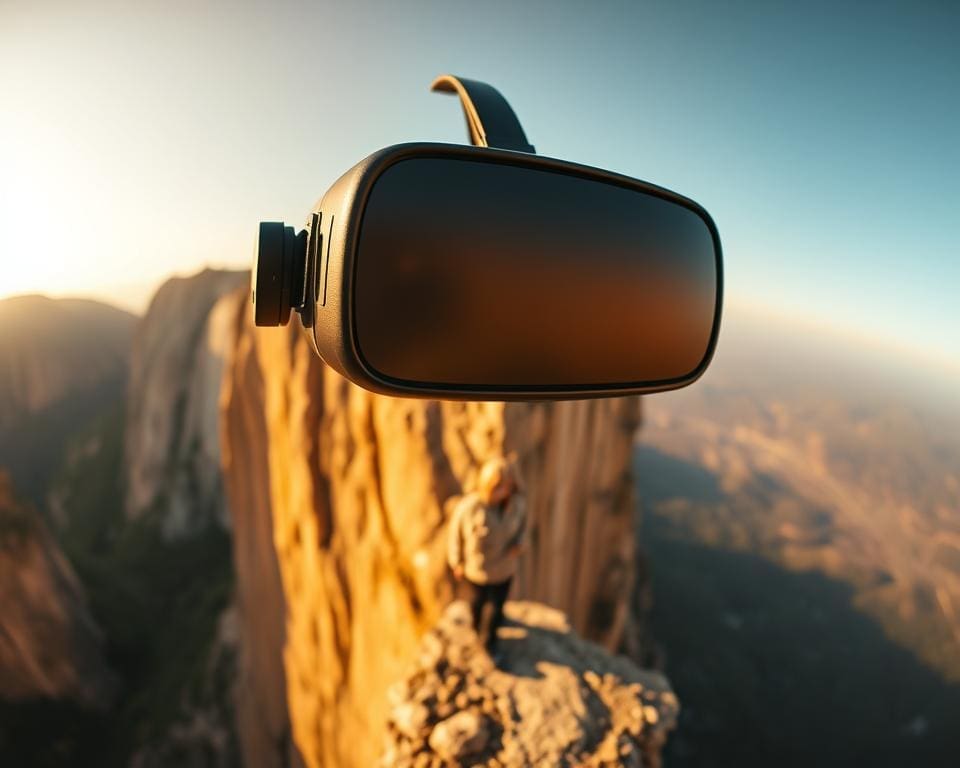The rapid advancement of virtual reality technology has opened up new possibilities in the realm of mental health treatment. One pressing question is, can VR cure your fear of heights? Acrophobia, or the fear of heights, affects countless individuals, leading to significant disruptions in daily life. It is not merely an irrational fear; it can trigger debilitating anxiety and make certain situations—like climbing stairs or flying—overwhelmingly distressing.
Statistics reveal that nearly 5% of the population suffers from this phobia, highlighting an urgent need for effective therapies. Enter VR therapy, which offers immersive experiences that simulate heights in a controlled environment. By engaging with these virtual scenarios, individuals can confront their fears in a safe space, paving the way for transformative change. As we delve deeper into the capabilities of virtual reality therapy, we will explore its impact on acrophobia and the numerous success stories affirming its effectiveness.
The Rise of Virtual Reality Therapy
Within the realm of mental health, virtual reality has emerged as a groundbreaking tool. This innovative approach, known as VR therapy, offers new possibilities for treating various psychological conditions, including phobias. By creating immersive experiences that mimic real-life environments, virtual reality redefines traditional therapeutic applications.
Understanding Virtual Reality
Virtual reality technology utilises advanced equipment such as headsets and motion sensors to deliver a simulated experience, transporting individuals into an interactive, three-dimensional world. Unlike traditional gaming, which primarily focuses on entertainment, virtual reality for phobias is designed with therapeutic intent. This technology enables therapists to construct controlled scenarios that help patients confront their fears in a secure setting, fostering a safe space for exploration and growth.
How VR Works in Therapy
VR therapy is rooted in the principles of exposure therapy, gradually guiding patients through anxiety-inducing situations. By immersing users in virtual environments that mimic their fears, the therapy encourages desensitisation. Researchers have found that exposure within a virtual context can significantly lower anxiety levels. Studies demonstrate the effectiveness of VR therapy in treating various phobias, highlighting a trend towards its increasing prominence in psychological treatments.

The Fear of Heights: What Is Acrophobia?
Understanding acrophobia is crucial in recognising its impact on individuals’ lives. This condition goes beyond mere discomfort; it is classified as an anxiety disorder with a specific focus on a fear of heights. Recognising the causes and effects is essential for effective acrophobia treatment.
Defining Acrophobia
Acrophobia is defined as an intense fear of heights that can trigger overwhelming anxiety responses. Individuals suffering from this condition often experience irrational fears when faced with heights, which can stem from a variety of psychological factors. Evolutionary perspectives suggest that this fear may have developed as a survival mechanism, while learned behaviours and personal experiences also contribute to understanding acrophobia. Recognising these aspects can be pivotal in the journey towards effective acrophobia treatment.
Common Symptoms of Fear of Heights
The symptoms associated with the fear of heights are often debilitating and can manifest in several ways. Individuals might experience:
- Dizziness or light-headedness
- Excessive sweating
- Rapid heartbeat or palpitations
- Panic attacks when at elevated locations
- Nausea or discomfort in heights
These physical reactions highlight the seriousness of acrophobia and underscore the importance of understanding acrophobia for those who wish to address their fears and seek treatment.
Can VR cure your fear of heights?
As the exploration of new treatments continues, the question arises: Can VR cure your fear of heights? This innovative approach to acrophobia treatment leverages cutting-edge technology to offer possibilities that were once unimaginable. Understanding the science behind VR therapy sheds light on its effectiveness.
The Science Behind VR Therapy
VR therapy utilises immersive environments to desensitise individuals to their fears. By simulating real-world scenarios involving heights, patients encounter their anxiety triggers in a controlled setting. This form of exposure therapy allows for gradual acclimatisation, enabling cognitive restructuring of negative thought patterns associated with acrophobia.
Clinical trials have revealed significant improvements in patients’ symptoms after undergoing VR therapy. Researchers have documented a marked decrease in anxiety levels, with some studies indicating that over 80% of participants reported a reduction in fear following treatment. Such statistics illuminate how VR therapy is a beacon of hope for many striving to overcome their fears.
Success Stories and Case Studies
Real-life success stories provide inspiration and assurance to those grappling with acrophobia. Many individuals have shared their journeys, detailing how engaging in VR therapy transformed their outlook on heights. Testimonials highlight remarkable breakthroughs after just a few sessions, reinforcing the practicality and effectiveness of this form of treatment.
From climbing higher altitudes to enjoying activities once deemed impossible, these powerful narratives reinforce the potential of virtual reality in conquering fear. The application of VR therapy not only addresses the symptoms of acrophobia but also empowers individuals to reclaim their lives.
Virtual Reality Simulations for Acrophobia
Virtual reality experiences have emerged as groundbreaking tools for individuals grappling with acrophobia. These immersive environments allow patients to confront their fears in a safe and controlled setting. The simulations are designed to offer various scenarios, effectively replicating situations that trigger height anxiety.
Diverse VR Experiences for Exposure Therapy
Participants in VR simulations for acrophobia can engage in diverse experiences tailored to their therapeutic needs. Scenarios may include standing on ledges, walking across high bridges, or exploring tall buildings. Each situation is crafted to gradually expose individuals to heights, enhancing their comfort level over time. The introduction of neurofeedback techniques and user customisation helps refine therapy outcomes, allowing patients to progress at their own pace while overcoming height phobia with virtual reality.
Technical Aspects of VR Simulations
The technology behind VR simulations incorporates advanced software and hardware to create realistic experiences. High-definition graphics and motion tracking systems contribute to a seamless interaction, enabling users to feel as if they are truly in the environment. User interfaces are designed for utmost safety and ease of navigation, ensuring that participants can focus on their therapeutic journey without distraction. These technical aspects underscore the effectiveness of virtual reality therapy in addressing acrophobia.
Overcoming Height Phobia with Virtual Reality
For those grappling with a fear of heights, the journey to recovery can often feel daunting. However, the advent of VR therapy presents an innovative and effective solution. Overcoming height phobia with virtual reality enables individuals to confront their fears in a safe, controlled environment, ultimately leading to transformative personal growth. These immersive experiences offer a unique way to engage with one’s fear, making the process of conquering fear of heights with VR not just possible, but achievable.
Engaging in VR therapy requires professional guidance to ensure that the experience is both safe and tailored to individual needs. Trained therapists can help navigate these virtual scenarios, allowing individuals to progressively face their fears while providing the necessary support. During this process, it’s crucial to stay committed to the therapy and remain open to the transformative potential of these cutting-edge experiences.
As the technology surrounding VR continues to evolve, numerous platforms now offer a range of virtual reality experiences specifically designed for treating acrophobia. By actively seeking out these available services, individuals can embark on a compelling journey toward overcoming height phobia with virtual reality. With the right support, dedication, and access to appropriate resources, conquering fear of heights with VR can lead to remarkable changes in one’s life, fostering newfound confidence and resilience.









